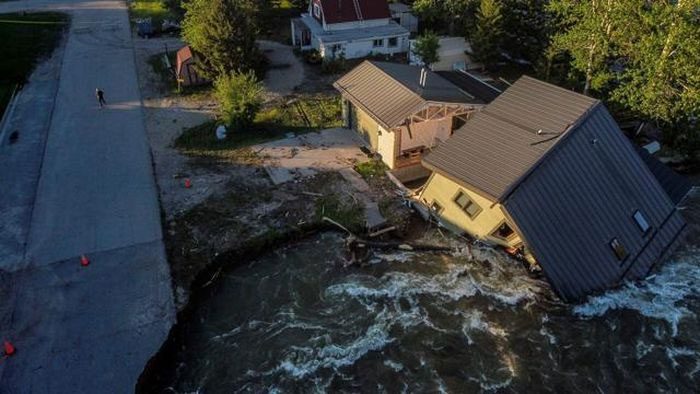The National Oceanic and Atmospheric Administration (NOAA) has reported that after three years of unstable climate, the La Niña weather phenomenon—which intensifies storm activity in the Atlantic and exacerbates drought in the West—is now dissipating.
According to the Associated Press, scientists say this is generally good news for the United States and other regions around the world, including the drought-stricken northeastern part of Africa.
Climate scientist Michelle L’Heureux, who heads NOAA’s El Niño/La Niña forecasting office, stated that La Niña is gradually fading, and the world is currently in what is considered a “neutral” state, with a tendency for El Niño to occur by late summer or fall.

La Niña is gradually fading, and the world is currently in a state considered “neutral”. (Illustrative photo: AP).
Through various studies, experts suggest that the La Niña phenomenon alters climate across the globe. In the United States, La Niña increases the number of storms in the Atlantic and exacerbates drought and wildfires in the West, leading to significant and costly damages. Overall, U.S. agriculture suffers more from La Niña than from El Niño.
Michael Ferrari, the Chief Scientist at Climate Alpha—a consultancy advising investors on climate-based financial decisions—indicates that if the world is influenced by El Niño, there will be more rainfall for the corn and grain belt in the Midwest, which could benefit crops.
According to NOAA economist and meteorologist Adam Smith, the U.S. has recorded 14 storms and tropical storms causing damages of over $1 billion each, totaling $252 billion in costs over the past three years. The La Niña phenomenon and human factors have had varying impacts on the climate.
“Climate change is the main factor making extreme weather worse with La Niña“, scientists say.
Phenomena Causing Extreme Weather
According to Professor of Atmospheric Science Victor Gensini from Northern Illinois University, human-caused global warming is leading to increased and more extreme temperatures. Some scientists argue that while La Niña tends to lower global average temperatures, El Niño slightly raises them. La Niña generally makes West Africa wetter, but East Africa, particularly around Somalia, experiences drought.
Ms. Ehsan explains that the opposite occurs during El Niño, causing drought in Somalia but also creating “short but steady rains.” According to NOAA, La Niña creates wetter conditions for Indonesia and parts of Australia, as well as the Amazon, but these areas become drier during El Niño.
Expert Ehsan explains that El Niño causes more heatwaves in India or Pakistan, as well as other regions in South Asia. Meanwhile, La Niña—first appearing in September 2020—has influenced weather patterns over the past three years. This phenomenon briefly subsided in 2021 but has made a stronger comeback recently.
“I’m fed up with this La Niña phenomenon,” Ms. Ehsan said.
Although La Niña has previously puzzled scientists, they have gradually become accustomed to studying its impacts as well as those of El Niño.
According to expert L’Heureux, the La Niña or El Niño phenomena act as forces pushing the weather system out of the Pacific, creating ripple effects around the globe. When neutral conditions occur, as they are now, there is less push from the Pacific. This means that other climate factors, including long-term warming trends, will have a greater influence on daily weather.
Ms. L’Heureux noted that forecasts for El Niño made in the spring are often less reliable than those made at other times of the year. Thus, scientists are less certain about what will happen next. However, NOAA’s forecasts indicate up to a 60% chance of El Niño occurring next fall, with only a 5% chance of La Niña returning.


















































